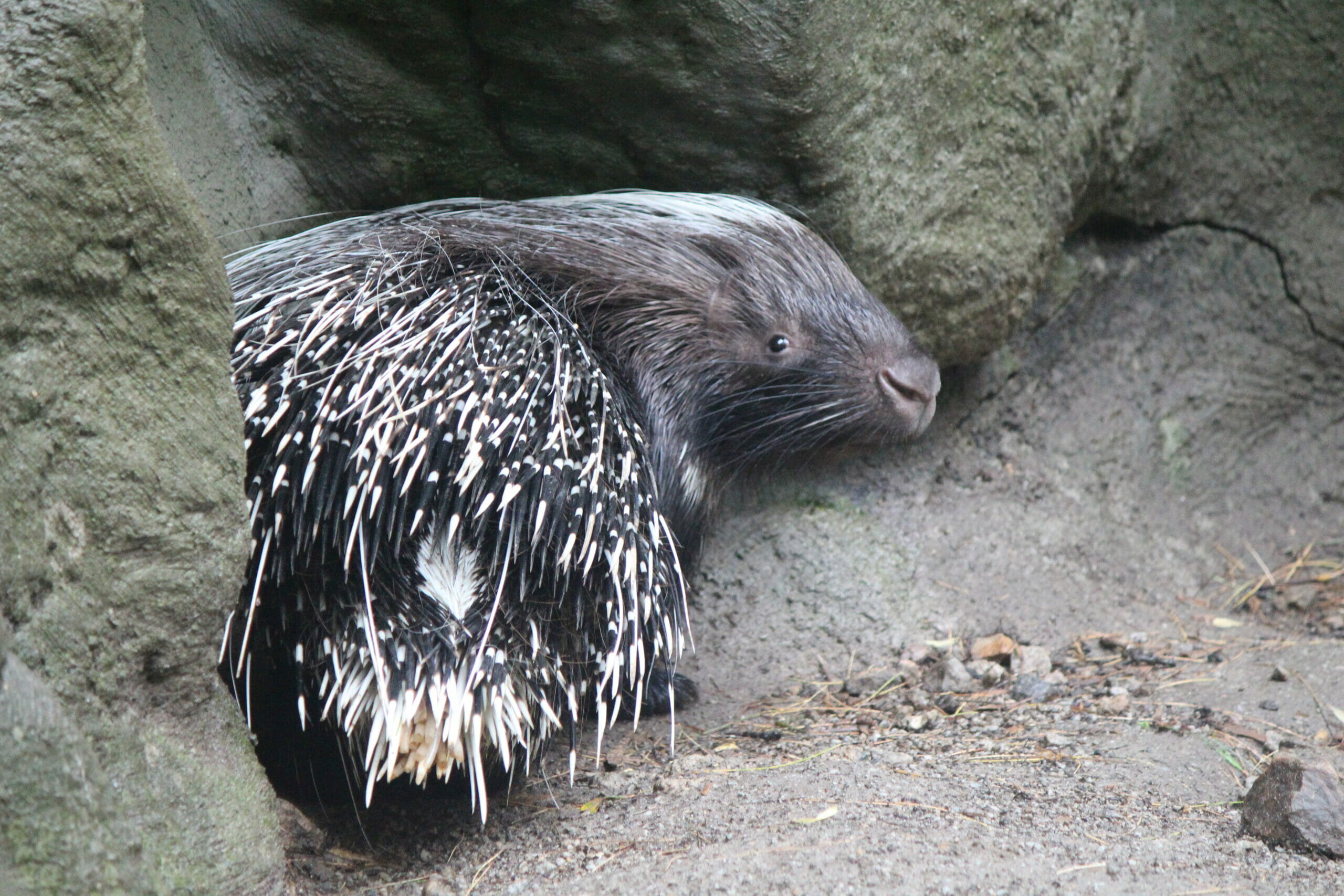
Cape Porcupine
Hystrix cristataClass: Mammalia Order: Rodentia Family: Hystricidae
Size
Weight: 30-60 lbs
Diet
Mostly herbivorous. They eat roots, bark, fruit, and plants. They sometime also consume insects and carrion.
Lifespan
Lifespan (Wild): 12-15 years
Lifespan (Captivity): up to 20 years
Habitat & Range
Forest, desert, grassland in Italy, North Africa, and sub-Saharan Africa.
Interesting Facts
- South African porcupines are the largest African species of rodent. Like all rodents, they have continually growing incisors that they use to gnaw. They will sometimes collect bones to bring back to their dens to gnaw on.
- When a porcupine feels threatened it will raise and fan its quills, stamp its feet, and charge their disturber or attacker. However, porcupines cannot throw their quills. Porcupines can also rattle their quills, and this sound is known as “quivering”.
- Unlike North American porcupines, an African porcupine’s quills do not have barbed ends. However, their quills are still very sharp and capable of piercing skin. African crested porcupines have quills of varying lengths, and some may be as long as 13 inches.
- Porcupines are nocturnal, meaning they are most active at night. Crested porcupines are often solitary, but may live together in small groups.
Conservation Status
Vulnerable
Threats
Threats include hunting and poisioning from pesticides on crops.
